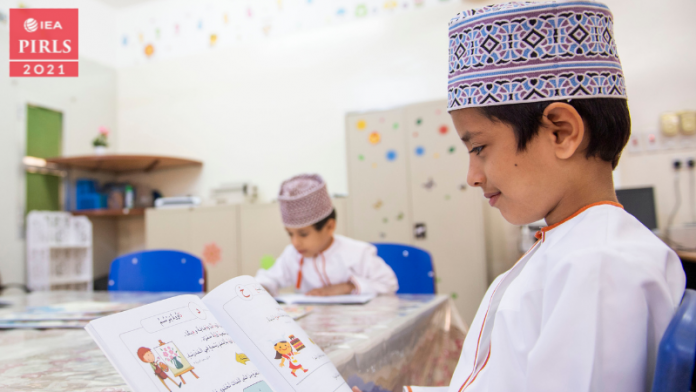Muscat: The Sultanate’s Ministry of Education will start implementing the Progress in International Reading Literacy Study (PIRLS 2021) in all governorates tomorrow (Wednesday).
PIRLS is an international evaluation study organized by the International Association for the Evaluation of Educational Achievement (IEA) to measures reading skills among fourth-grade students. This year is the third participation round for the Sultanate, respectively, after the 2011 and 2016 rounds.
A sample of schools was chosen to represent the Sultanate internationally in this study, with a total of (222) schools, of which (189) government schools, (17) private schools, and (16) international schools from all educational directorates in the governorates.
The number of students participating in the actual application as a random sample in this study reached (6381) fourth-grade students where (372) students participate from (15) schools in the Governorate of Dhofar, and (232) students from (8) schools in the Governorate of Musandam. From the Governorate of Muscat, the number of participating students is (825) from (28) schools, (505) students participating from the Governorate of South A’Sharqiya. The Governorate of South Al Batinah participates with (653) students from (22) schools and the Governorate of Al Buraimi participates with a selected division from (10) different government schools where the number of students taking the test is (272) students. From the Governorate of North A’Sharqiya, a total number of (340) students from (14) schools are participating in PIRLS 2021, alongside (298) students from (10) schools from the Governorate of A’Dhahirah, (174) from (8) schools from the Governorate of Al Wusta, and (717) students from (24) schools from the Governorate of A’Dhakhiliya.
It is worth noting that the Progress in International Reading Literacy Study (PIRLS 2021) aims to achieve several goals including providing countries with comparative international data, data on their national trends in reading literacy and writing among fourth-grade students, studying and analyzing school systems to stand on its pros and cons, and collecting data and information about the home and school environment, and reading activities in the school by distributing and analyzing the four questionnaires to identify the factors that are associated with high levels of literacy.
The study also seeks to identify the competencies of students in achieving goals set according to the reading standards, as well as to identify the percentage of differences between the performance of females and males, and between the different types of schools, and also to identify the factors associated with the acquisition of knowledge, and related to teaching methods, as well as school resources. It also aims at highlighting strengths and weaknesses in relation to students’ literacy level which will provide decision-makers with adequate information on where the resources should be directed to improve early literacy, and how reading is taught, and the extent to which its time, methods, and materials are organized in schools. The study also seeks to compare the educational practices of the teachers of the participating countries with those of other countries.






